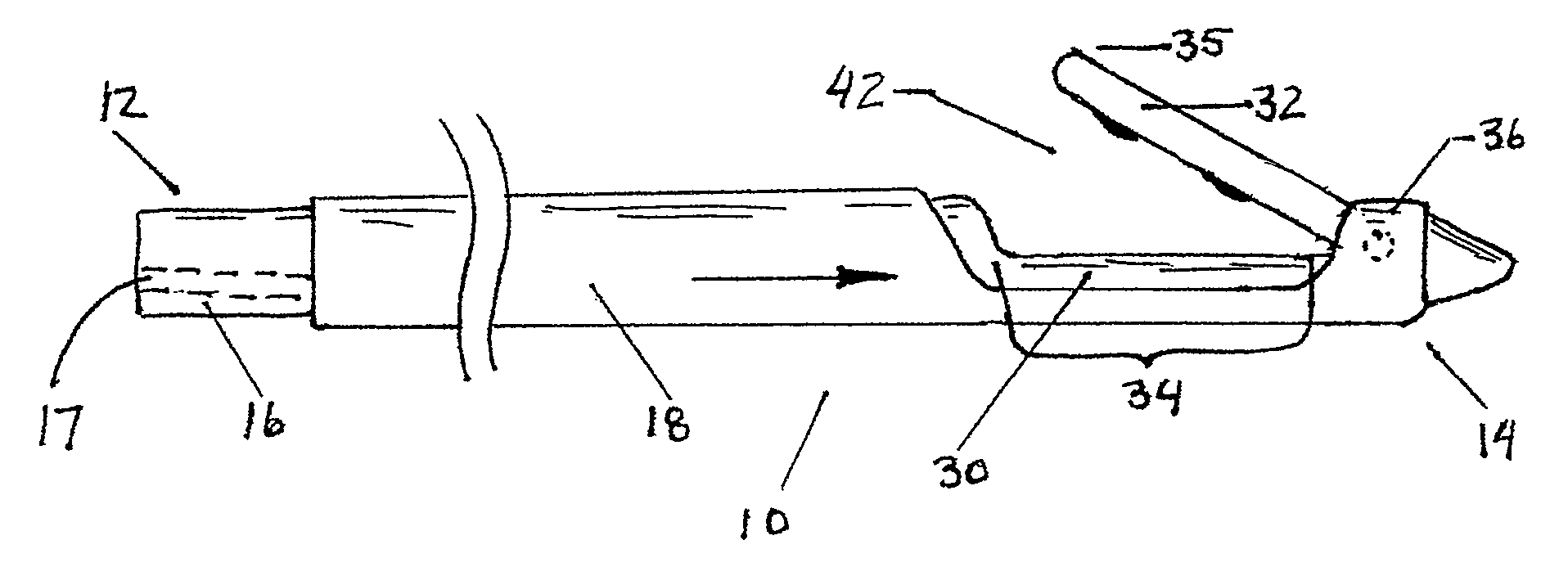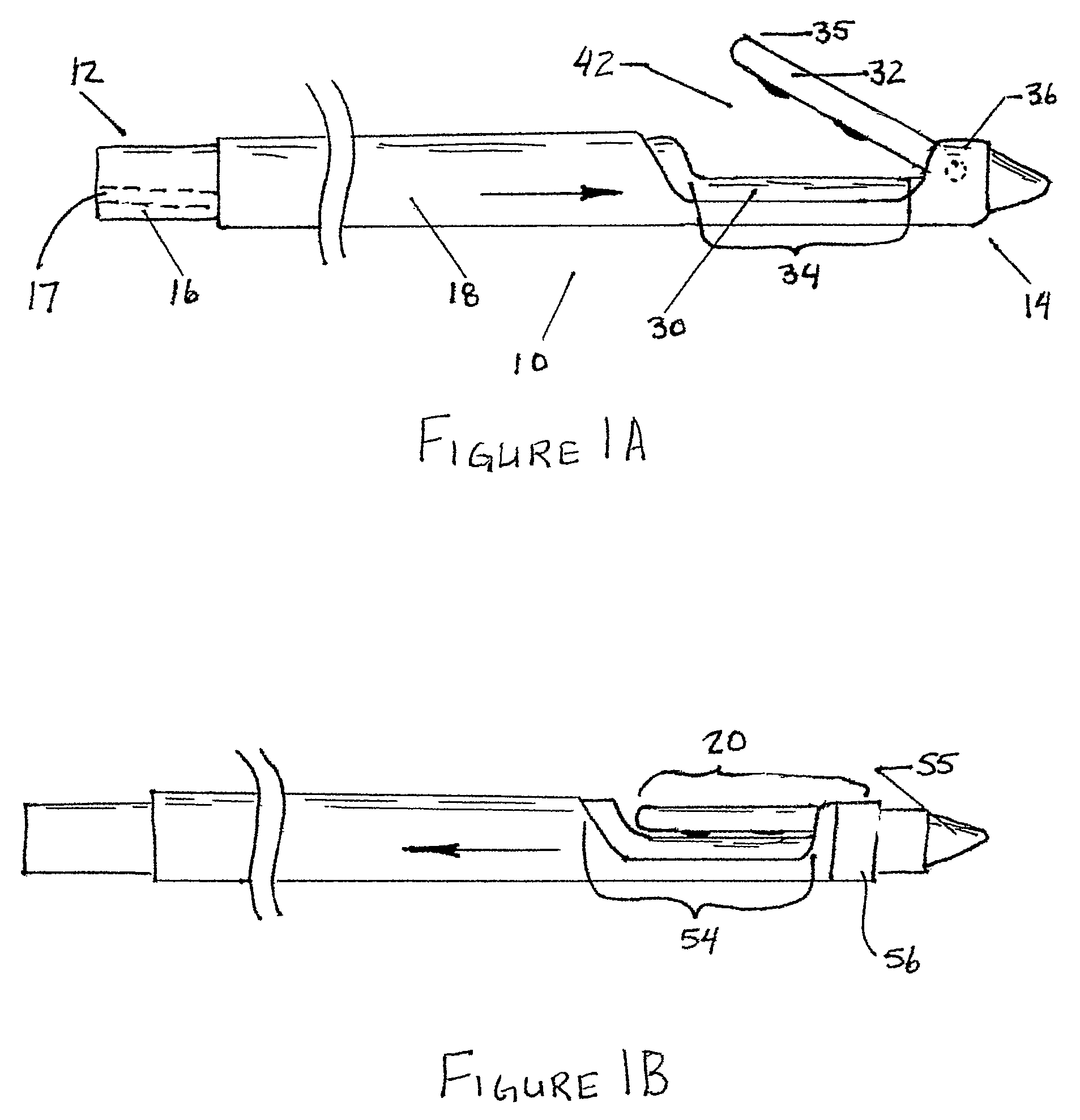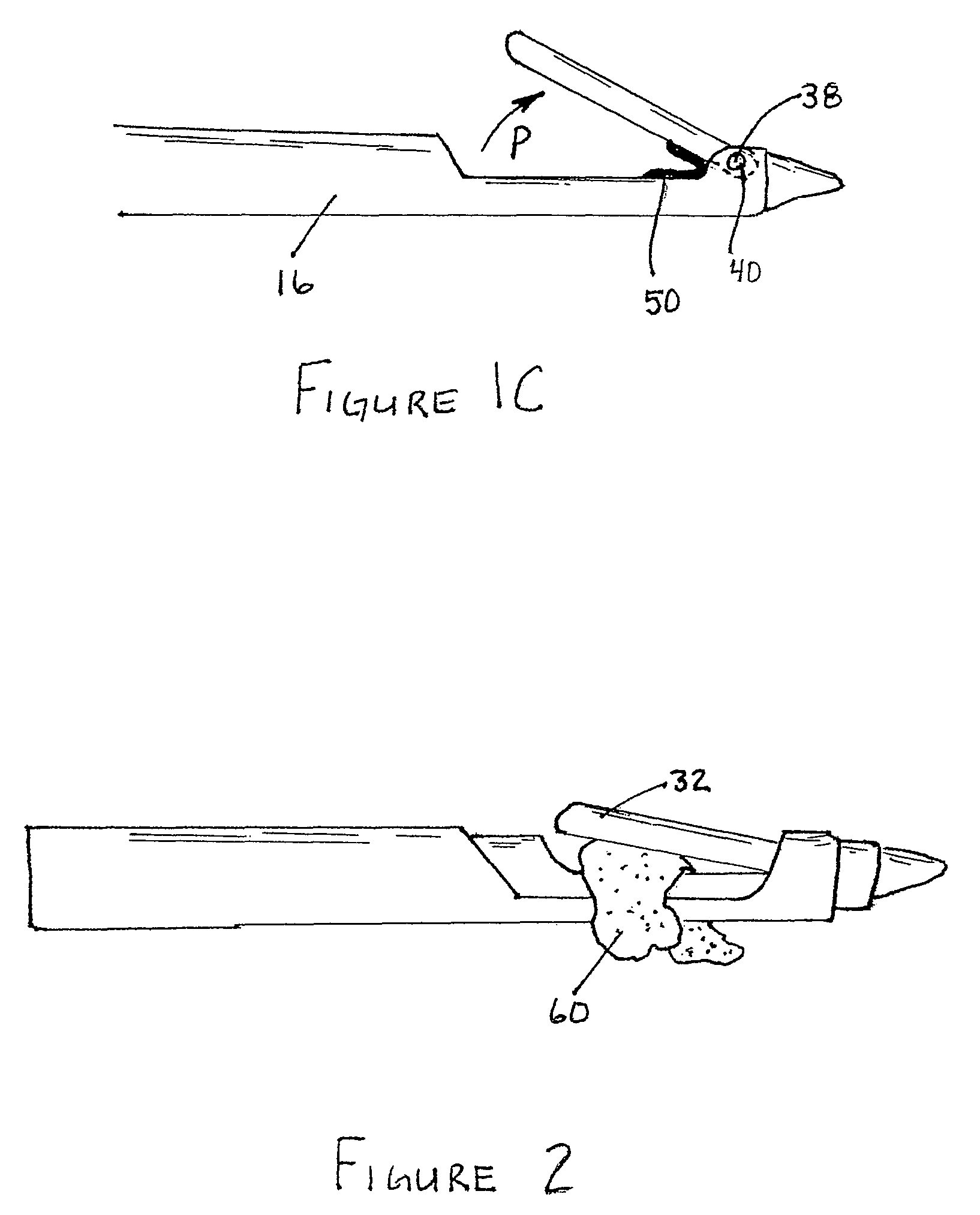Reverse sealing and dissection instrument
a technology applied in the field of reverse sealing and dissection instruments, can solve the problems of limited visibility, inability to see the action of a forward-facing cutter, and difficulty in tissue manipulation, and achieve the effect of facilitating tissue removal and superior dissection capabilities
- Summary
- Abstract
- Description
- Claims
- Application Information
AI Technical Summary
Benefits of technology
Problems solved by technology
Method used
Image
Examples
Embodiment Construction
[0035]Although several different methods of sealing and cutting body tissue are known in the art, accessing certain anatomical cavities in the body that may have limited accessibility and visibility and then sealing and / or cutting through tissue is difficult. Therefore an improved tissue sealer and cutting instrument is described that facilitates tissue removal inside small areas of the body by employing a reverse cutter. This cutter may facilitate tissue removal by improving visualization of the cutting procedure. When the cutter is reverse directed, that is to say that the jaws of the cutter open toward the proximal end of the instrument rather than away from the proximal end of the instrument the operator may more easily visualize the cutting process especially if the endoscope is inserted along the longitudinal axis of the instrument. This and other advantages of this type of cutter will be appreciated as shown in the drawings. Referring to the FIGS. 1-10, an instrument 10 is sh...
PUM
 Login to View More
Login to View More Abstract
Description
Claims
Application Information
 Login to View More
Login to View More - R&D
- Intellectual Property
- Life Sciences
- Materials
- Tech Scout
- Unparalleled Data Quality
- Higher Quality Content
- 60% Fewer Hallucinations
Browse by: Latest US Patents, China's latest patents, Technical Efficacy Thesaurus, Application Domain, Technology Topic, Popular Technical Reports.
© 2025 PatSnap. All rights reserved.Legal|Privacy policy|Modern Slavery Act Transparency Statement|Sitemap|About US| Contact US: help@patsnap.com



